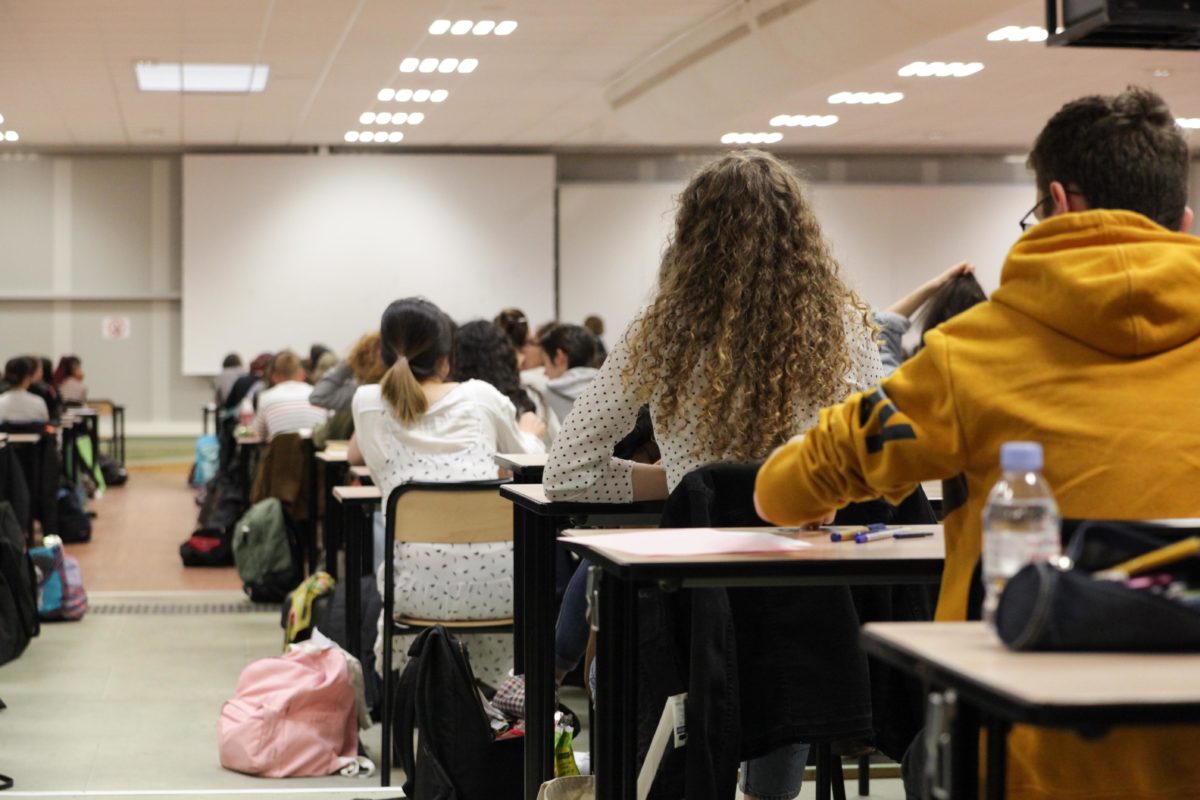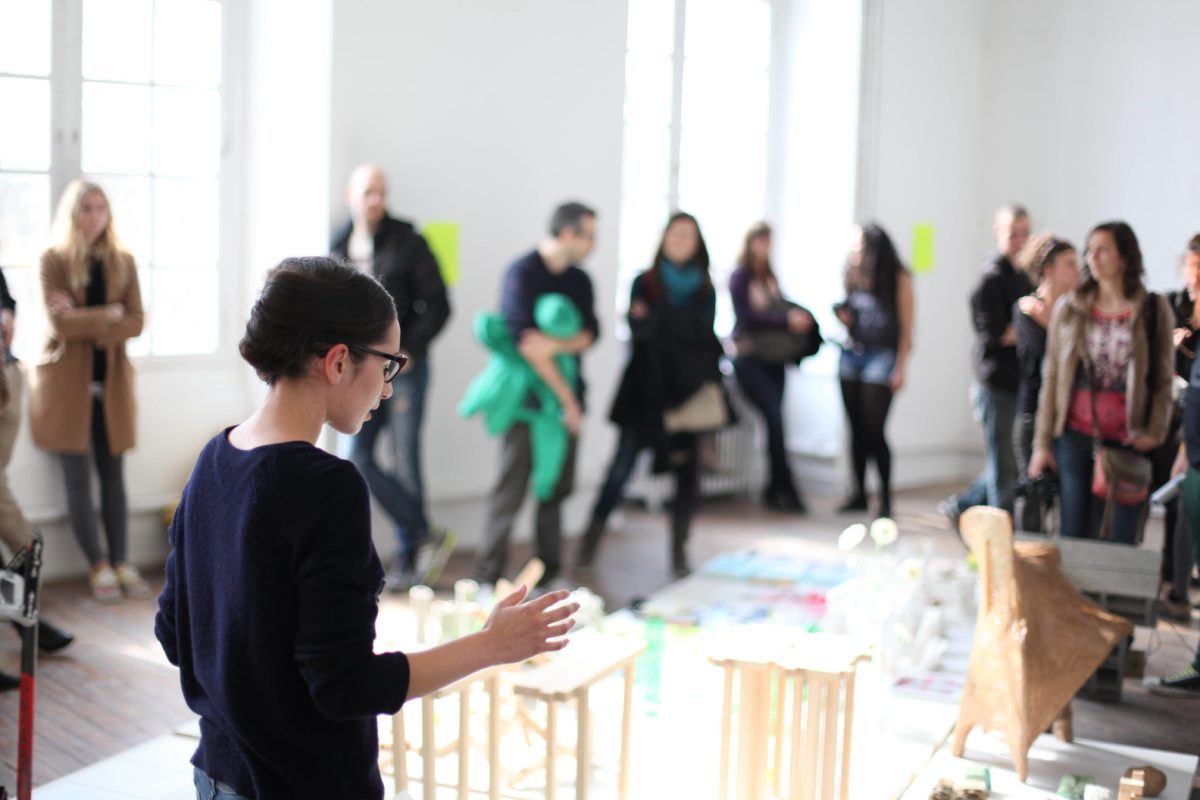In art, design and graphic design
Admission to art, design or graphic design at isdaT can be made:
- in cycle 1 / year 1: entrance exam
- in cycle 1 / years 2 or 3: admissions commission during the school year
Cycle 1 of the course allows students to obtain a Diplôme National d’Art (equivalent to a Bachelor of Arts) (DNA).
- in cycle 2 / years 4 or 5: admissions commission during the school year
Cycle 2 of the course allows students to obtain a Diplôme National Supérieur d’Expression Plastique (equivalent to a Master’s degree) (DNSEP).



In year 1
In 2021, isdaT changed its entrance exam so as to inform candidates that three options (art, design, graphic design) exist as of the 2nd year of study leading to the Diplôme National d’Art (equivalent to a Bachelor of Arts) (DNA, equivalent to a degree) and to the Diplôme National Supérieur d’Expression Plastique (equivalent to a Master’s degree) (DNSEP, equivalent to a Master 2).
For the admissions competition, each candidate will have to choose between:
- a jury made up of art teachers,
- a jury made up of design teachers,
- a jury made up of teachers in graphic design.
according to the candidate’s personal direction of study with a view to admission to year 1, which remains a general year of learning methodologies, practices and theory, with an introduction to the three options from the 2nd semester.
The choice between the three types of juries made by the candidate for the competition does not constitute admission to the 2nd year in that chosen option. The student’s final choice will be made when registering for the 2nd year.
Admissibility conditions to the competition
Admission to year 1 is by competitive examination open to holders of a baccalaureate or an equivalent diploma. The jury may make exceptions and admit the candidacy of non-baccalaureate holders. The latter option must be justified by a confirmed personal practice and submit a request for exemption before February 15, 2024 at noon to the director of the establishment by contacting the pedagogical secretariat in advance. The registration fee for the entrance exam is 50 euros.
ParcourSup 2024
- For students in their final year of high school, candidates who have already obtained their baccalaureate, and candidates who are returning to school, registration for the competitive entrance exam for year 1 of the art, design, and graphic design program will be done solely through the ParcourSup platform according to the national calendar.
- Only candidates applying for admission without a baccalaureate will be able to register directly with isdaT, by requesting an exceptional admission file from fabrice.mateo@isdat.fr.
The 2024 competition
There is no eligibility test at isdaT. All candidates who pre-register are invited to the entrance exam.
Successful completion of the isdaT entrance exam is independent of the type of baccalaureate prepared, the course taken in high school and the grades obtained. Personal artistic production is central to the admission process. Curiosity and motivation during the tests are decisive for the juries, as well as artistic skills, theoretical reflection, and openness to the contemporary world.
The entrance exam to enter the first year consists of 2 tests:
1. A practical-theoretical written test lasting 4 hours (including 30 minutes of presentation of the test at the beginning of the session and answers to the candidates’ questions), coefficient 2, divided into 2 parts:
- The first practical part consists of a free 2-hour walk in an urban environment with the objective of collecting information and making a survey (drawing, collage, notes…) based on a thematic orientation that the student will have chosen beforehand from among the subjects proposed. The main rendering must be on paper (format and type of medium chosen by the candidate).
Paper is not provided by isdaT. Candidates must bring the necessary material for this test: notebook, pad, sheets of paper, markers, colored pencils, ballpoint pens, pencils…
Different digital recording practices (photography, video, sound, drawing…) are accepted as complementary to the main work, at the candidate’s choice. - The second theoretical part, lasting 1h30, consists of the writing of a narrative and an argument resulting from the practical test and testifying to the candidate’s ability to analyze and position his/her work as well as his/her general artistic culture. This writing will allow the candidate to prepare for part of the interview with the jury.
2. An interview with the jury, lasting 20 minutes, coefficient 3, also consisting of 2 parts:
- In 10 minutes, the candidates will have to present the work done during the first part of the practical test and discuss with the jury the choices they made during this test.
- In addition to this presentation, candidates will have a 10-minute discussion of their personal work (drawing, painting, publishing, objects, notebooks – portfolio documents are not allowed during the oral exam, except in exceptional cases, the jury expects a material presentation of the work; candidates must therefore organize to transport them), which will demonstrate their curiosity and the diversity of their artistic research. This exchange will make it possible to evaluate their critical eye, their autonomy in their choices and their motivation to engage in artistic studies.
The 4 general criteria for assessing candidates during the entrance examination tests are as follows:
I. Academic skills, methodological skills, know-how (30%)
- development of a personal artistic practice—Essential
personal work, whatever the nature of the practices and mediums - ability of plastic expression—Essential
in a limited time and a given context, make choices and give them a plastic form - expression and analysis skills—Essential
know how to develop oral and written thoughts.
II. Social skills (20%)
- ability to develop research in plastic and visual fields—Essential
quality of vision, visual culture, popular culture, taste for research and discoveries - autonomy and taste for the community—Very important
initiatives taken in artistic practice, readings, research, exhibition visits; participation in collective projects, knowing how to share work spaces - intellectual curiosity—Essential
variety and uniqueness of the work and exchanges with the jury - critical thinking—Very important
ability to observe, analyze and criticize one’s environment; be prepared to accept a critical reading of one’s own work.
III. Motivation, knowledge of the training, coherence of the project (20%)
- motivation—Essential
During the interview with the jury, the candidate’s motivation to study in an art school, the candidate’s universe and general and artistic culture references are evaluated - knowledge of isdaT training—Very important
How do you see yourself in the studies we offer? What are your expectations regarding our course programs? How do you want to build your professional future?
IV. Commitments, activities and interests, after-school or extra-curricular achievements (30%)
- open-mindedness—Essential
involvement in research into contemporary design art and graphic design - interest in creation and its interactions with societal issues—Very important
all fields in art and design, including related fields: literature, crafts, political economy, philosophy, ecology, cinema, popular culture, ethnology… - interest in art and design—Very important
interest in art and design in their historical forms and in the evolution of their contemporary forms.
Lessons from the session and advice to candidates
- to prepare for written and oral presentations: make precise lists of important references for oneself (works, exhibitions, films, theoretical or literary books, etc.). They constitute a resource, food for creation.
- prepare for the oral: the candidate must make a selection from their original work to bring for the oral (no portfolio or book printed from a PDF) and organize in advance a speech associated with critical reading of this work (methodology, tools, references, questions), all in 10 minutes. Plan for efficiency in the organization of work: unpacking time must be reduced to a minimum. Need for the candidate to write what he or she wants to say about their work, repeat it out loud to adjust their words, memorize what they are going to say in order to own the text as for a theatrical role, present it to his loved ones within the allotted time. An oral presentation requires preparation, repetition, you have to be comfortable with the articulation of your thoughts.
Tuition fees
Tuition for the 2024-2025 year is 440 euros (290 euros for scholarship holders).
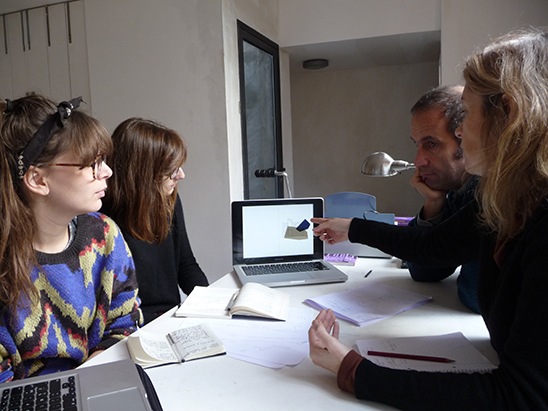
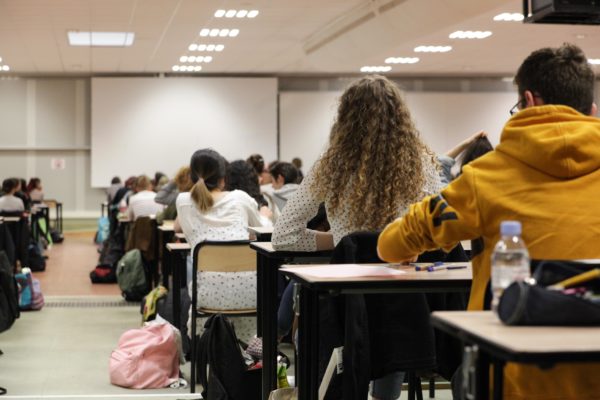
Admission calendar in year 1
- January-March, 2024: pre-registration on ParcourSup according to the platform’s national calendar
- From April 22 to 26, 2024: entrance exam
- June, 2024: results on ParcourSup according to the platform’s national calendar



During the school year: cycle 1 or 2
During the school year: cycle 1 or 2
To qualify for admission to cycle 1 (years 2 and 3) or to cycle 2 (years 4 and 5) in art, graphic design or design, applicants must have 60, 120, 180 and 240 European credits respectively:
1 – Obtained in France as part of a higher education:
- in a public institution for higher learning;
- in a private educational establishment, on condition that this establishment has been recognised by the State or that the course of studies followed by the candidate in the said establishment has resulted in an equivalent degree or diploma registered in the national directory of professional certifications;
2 – Obtained in another Member State of the European Union or in another State within the framework of studies pursued at an institution for higher learning where rules on higher learning set out by the European Area apply. A knowledge of French corresponding to level B2 of the common frame of reference is required for entry to diploma years. For other years, fluent French is required.
3 – For diplomas obtained outside the European Union or a State part of the European Economic Area agreement, any qualifications will be checked for their comparability with French diplomas.
The CIEP and the Centre Enic-Naric France are organisations that offer, among their services, the recognition of a foreign diploma in France (for a fee).
Admission commission
Following a preselection of the applications, candidates will be invited to an oral interview with a jury of professors in front of which they will have to support their artistic approach and their motivation for joining the establishment. The registration fee for the admission committee is 50 euros.
Tuition fees
Tuition for the 2024-2025 year is 440 euros (290 euros for scholarship holders).
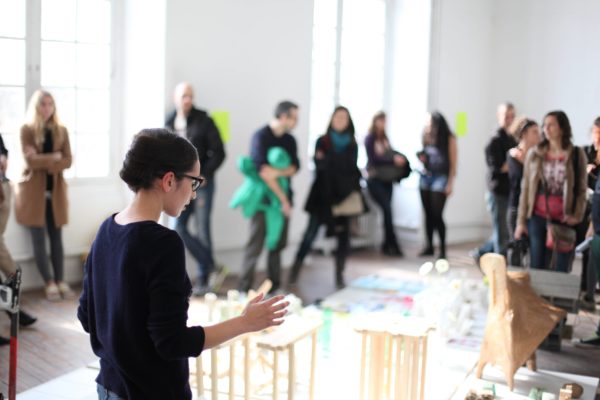
Admission calendar during the school year
- From December 22, 2023 to March 12, 2024 at noon: online pre-registration
- From March 13 to 20, 2024: commission pre-selection
List of candidates shortlisted by admissions committees - From April 16 to 18, 2024: admission and equivalence committees
- 2nd half of May, 2024: results



Contacts
- Fabrice Matéo, educational secretary — fabrice.mateo@isdat.fr — +33 (0)5 31 47 11 94
- Bettina Mellet, educational secretary — bettina.mellet@isdat.fr — +33 (0)5 31 47 11 95




